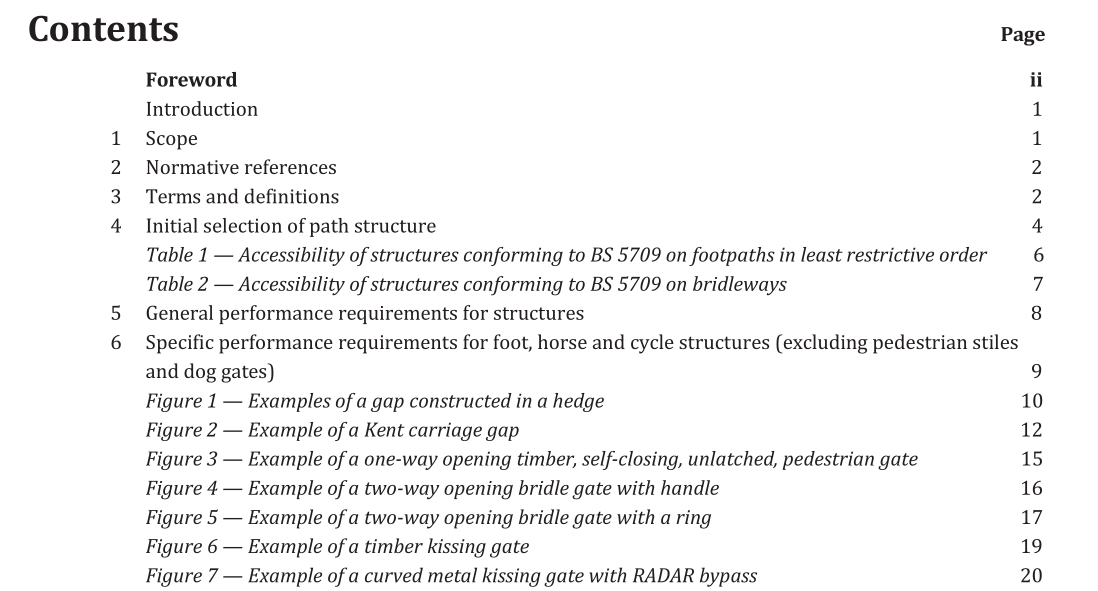BS 5709:2018 pdf download.Gaps, gates and stiles – Specification
1 Scope
This British Standard specifies field-measurable performance requirements for new gaps, gates and stiles for footpaths, bridleways, restricted byways and other routes used by the public. It can also be used for structures to be installed on permissive paths, wholly private ways and on commons. It includes a hierarchy of accessibility performance requirements to raise awareness of the characteristics of different structures. It does not attempt to provide performance requirements in relation to land management need, to be individually assessed according to the circumstances. It can be used to establish and maintain a quality in all new structures that represents good practice. This British Standard does not automatically apply retrospectively to most existing structures. It can be used as guidance for those who wish to repair or improve existing structures. This British Standard does not allocate decision making, installation, maintenance or record keeping to any particular organization or person. This British Standard is intended to be used by: a) those planning, specifying or authorizing new structures on paths (e.g. highway authorities, highways agencies, district councils, landowners, tenants, user groups and others handling diversions, creations or dedications of paths subject to gaps, gates and stiles); b) those making and buying path structures or kits; c) those installing path structures; and d) those replacing, maintaining and inspecting path structures.
4.4 Least restrictive option
Where there are no explicitly identified and cogent counter-reasons in choosing a structure which conforms to this standard, the type of structure chosen shall be the least restrictive option which also meets the land management needs. NOTE 1 See the Defra guidance Authorising structures (gaps, gates and stiles) on rights of way [7]. NOTE 2 An example of a cogent counter-reason could be where a landholder wishes to dedicate a new path for public use but wishes to have a right to erect a kissing gate even though there is no requirement to control farm animals. Here the benefit to the public might outweigh the added inconvenience. The principle of applying the least restrictive option means that a path crossing a boundary shall in the first instance be unrestricted or, failing that, be restricted to the least possible extent consistent with the need for a structure on the land. The assessment shall include an evaluation of the extent of any restriction which is to be created (e.g. a stile would create an absolute barrier to mobility vehicle users and many walkers with pushchairs as well as those with limited mobility). New structures shall not be stiles other than in exceptional circumstances; where this applies, the reason behind the decision shall be recorded and made available on request. NOTE 3 For example, the use of more than one structure at a single crossing of hedge or ditch is unlikely to be the least restrictive. But sometimes double or tandem gates can enhance stock security, protect structures and benefit some path users. The requirement to be the least restrictive option is an ongoing requirement and in order to conform to this standard when the purpose of the structure changes (for example, when the land use changes from pasture to arable) the appropriateness of the structure as the least restrictive shall be reviewed and changes to the structure (whether less or more restrictive) made accordingly.
BS 5709:2018 pdf download
